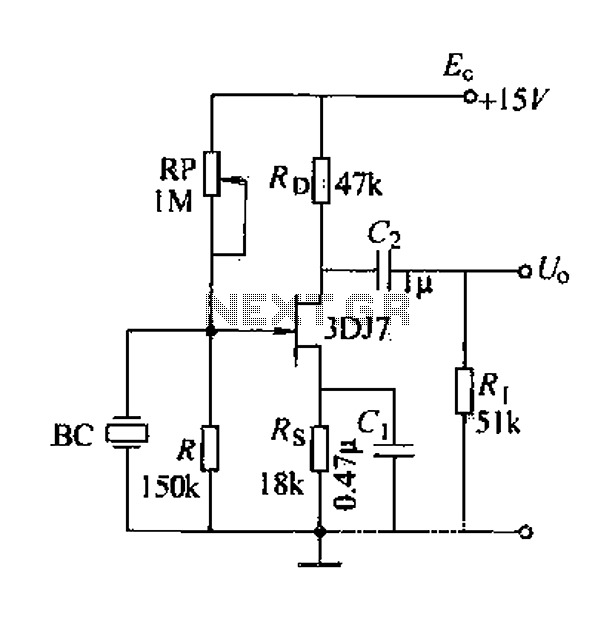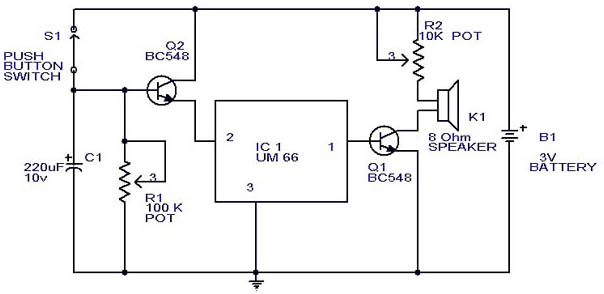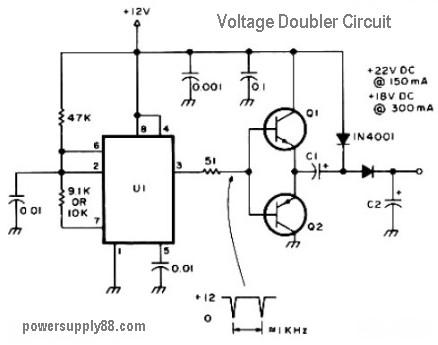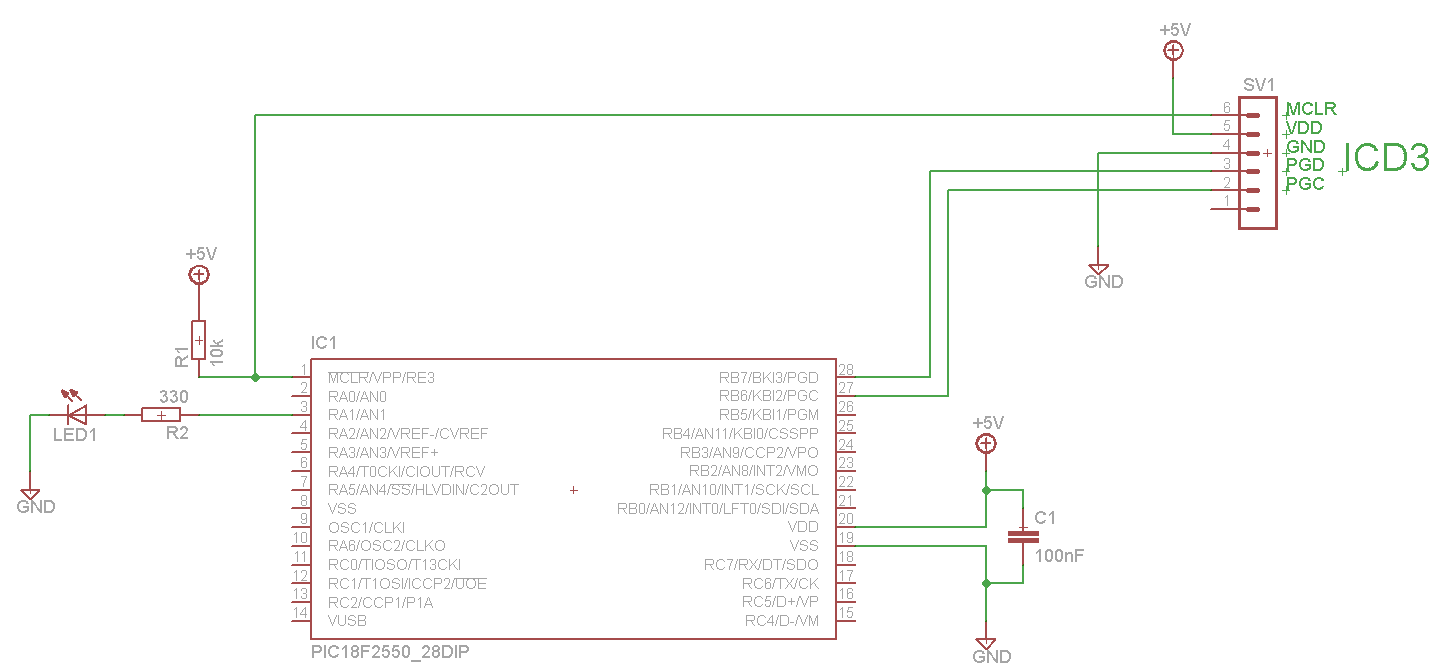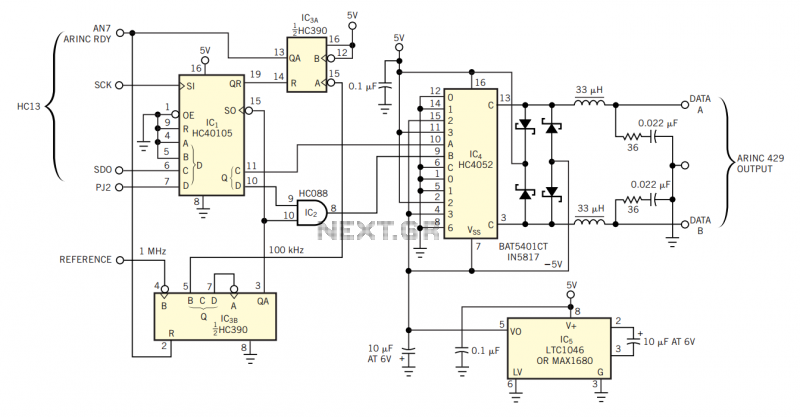
RF Modulator Circuit Composed of TA7673
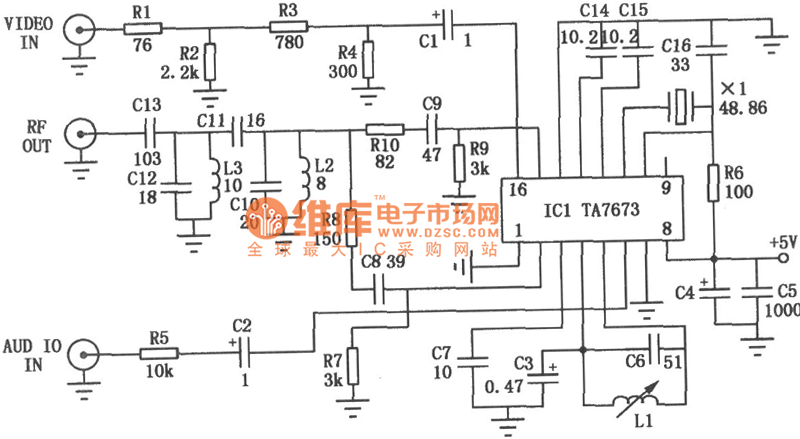
The RF modulator is a crucial component in televisions, VCRs, satellite receivers, format converters, home computers, and gaming consoles. This circuit is straightforward, stable, and easy to construct, allowing for seamless integration with various circuit boards. The schematic diagram illustrates the RF modulator circuit, with ICl representing the modulator ASIC (TA7673). Pins 10 and 11 generate the image signal.
The RF modulator circuit is designed to convert baseband video signals into radio frequency (RF) signals suitable for transmission over coaxial cables. The TA7673 integrated circuit serves as the core of the modulator, facilitating the modulation process through its internal architecture. The circuit typically includes components such as resistors, capacitors, and inductors that work together to filter and amplify the signal, ensuring high-quality output.
In operation, the modulator receives composite video input, which is then processed to create an RF output. The modulation technique employed can vary, but it often involves amplitude modulation (AM) or frequency modulation (FM) to encode the video signal onto a carrier frequency, typically within the VHF or UHF bands. The output can be connected directly to a television or other RF-compatible devices.
The design also incorporates power supply considerations, ensuring that the modulator operates efficiently and reliably. Proper grounding and shielding techniques are essential to minimize interference and maintain signal integrity. The circuit can be adapted for various applications by modifying the output frequency or adjusting component values to meet specific requirements.
Overall, the RF modulator circuit is an essential building block in modern electronic systems, enabling the seamless transmission of audio-visual content across different platforms and devices.The RF modulator is the very important component in TV, VCR, satellite receiver, format converter, home computer and game machine. This circuit is simple, stable and easy to make, it can be easily connected with a lot kinds of circuit boards.
The figure is the circuit of RF modulator, ICl is the modulator ASIC (TA7673), the 10-pin and 11-pin generate the ima.. 🔗 External reference
The RF modulator circuit is designed to convert baseband video signals into radio frequency (RF) signals suitable for transmission over coaxial cables. The TA7673 integrated circuit serves as the core of the modulator, facilitating the modulation process through its internal architecture. The circuit typically includes components such as resistors, capacitors, and inductors that work together to filter and amplify the signal, ensuring high-quality output.
In operation, the modulator receives composite video input, which is then processed to create an RF output. The modulation technique employed can vary, but it often involves amplitude modulation (AM) or frequency modulation (FM) to encode the video signal onto a carrier frequency, typically within the VHF or UHF bands. The output can be connected directly to a television or other RF-compatible devices.
The design also incorporates power supply considerations, ensuring that the modulator operates efficiently and reliably. Proper grounding and shielding techniques are essential to minimize interference and maintain signal integrity. The circuit can be adapted for various applications by modifying the output frequency or adjusting component values to meet specific requirements.
Overall, the RF modulator circuit is an essential building block in modern electronic systems, enabling the seamless transmission of audio-visual content across different platforms and devices.The RF modulator is the very important component in TV, VCR, satellite receiver, format converter, home computer and game machine. This circuit is simple, stable and easy to make, it can be easily connected with a lot kinds of circuit boards.
The figure is the circuit of RF modulator, ICl is the modulator ASIC (TA7673), the 10-pin and 11-pin generate the ima.. 🔗 External reference
